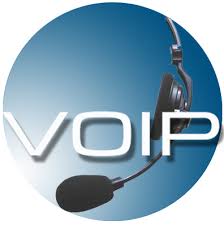The internet is useful in providing a platform for working
in collaboration with other people and organizations.
Groupware refers broadly to social media software
applications that facilitate the interactions of working groups. With
groupware, group members can obtain, change and share knowledge within the
group despite being geographically distributed and cannot have meetings
physically.
There a wide variety of social media applications that can
be used for group productivity and also collaboration. Some of them are
described below:
- Emails
E-mail is the most basic and
popular way to communicate over the Internet. It is useful because it works
well in low and high bandwidth.
- Listserv
Listserv software allows groups of
people to be easily connected together for discussions and information exchange.
- Blogs
A blog is a tool that allows users
to share access and easily update information, without having any knowledge of
computer programming. Blog is an easy way to communicate knowledge. Other people
can also comment from blogs making it more lively.
- Micro blogging
Microblogging is a form of blogs
but here it can be used to post short text updates via web browser, instant
message, e-mail or mobile text messaging. It can be short updates like people’s
status for example.
Twitter is a main service for
microblogging.
- Video Sharing
Using the advent of digital
cameras and mobile phone video cameras, people can use videos to document their
work; share stories of practice; and get critical voices heard more broadly. Now
people can even share videos online via YouTube which is the most popular video
sharing website. Users can even upload, view, comment and rate short videos.
- Photo Sharing
There are also websites where uploading,
editing, tagging, sharing and accessing digital photos and images are possible.
For instance, Flickr is one of the most famous photo sharing website.
- Podcasting
Podcasts are
audio programs that are broadcasted over the Internet. They are audio files
(such as MP3) which can be downloaded to a compatible digital audio player or a
computer. Users can create audio files using their computer, an audio recorder,
or even some digital cameras and mobile phones, and post them to the web.
- Wikis
Wikis is a
website which can be edited online using a browser. Wikis can be edited live. The
administrator of a wiki can even specify who may view and edit the site. In
addition, Wikis also include a powerful versioning system which tracks changes
made to pages and stores previous versions, enabling administrators to revert to
previous versions of pages. It is indeed an effective tool for collaboration
and there is much interaction between users.
- Chats and instant messaging
Instant Messaging
is one of the most popular applications on the web. It allows two or more
people to exchange messages in real time, using a web or desktop application. A
group of people can start a conversation online in a space commonly called a
"chat room". IM can be used to send images while chatting,
incorporates voice in the chat as well as exchanging animated icons. MSN is a
common instant messaging application.
- VOIP
VoIP allows
people to make phone calls over the Internet instead of using the traditional
telephone system. Users must have access to a microphone and speakers or
headset connected to the computer. It also requires high-speed Internet
access since the quality of the sound can be affected by the connection speed. One
of the most popular programs to use VoIP is Skype. With Skype group
conversations can be made.

- Project management tools
Project
management tools include software for scheduling, managing budget and
resources, following up on tasks and workflows, graphics and charts of the
progress of the project and some communications and document sharing features.
These tools can help support your distributed projects.

